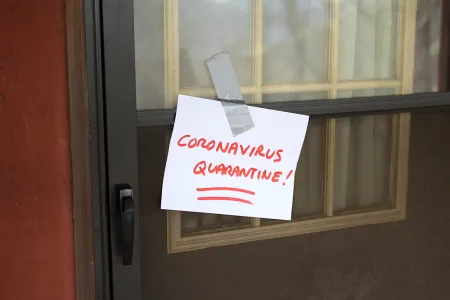If you are determined to be a close contact by contact tracing, you will be required to quarantine in your home for a minimum of 14 days. You currently cannot test out of quarantine by receiving a negative SARS-CoV-2 test. You must complete the full 14-day quarantine.
Isolation or quarantine will be disruptive to daily life. Your contact with others and the outside world will be restricted. Therefore, making sure your household is prepared before it is required is critical.
Once in isolation or quarantine, heightened household disinfection strategies are needed and you will not be permitted to leave your home. Having disinfection products, shelf-stable food, and supplies at the ready will make the process less stressful. In Tompkins County, the purchase of disinfection products is limited in many stores to single items. It is a good habit to pick up one disinfection item every time you are shopping to start your own small stockpile.
The same goes for food supplies, as well as items like laundry detergent, over the counter medicine to treat symptoms like fever, and prescription medicine. Aim to have enough supplies at home to keep your household disinfected and functioning for at least two weeks. Your preparatory stockpile can be supplemented via delivery services as needed – but having a stockpile ensures you are not left empty-handed if you must wait a few days for delivery.
It is also worthwhile to think about how you might entertain yourself if in quarantine or isolation. A ready stash of books, solitary games, or movies will help combat boredom.
While being notified that you must isolate or quarantine may be jarring, having a prepared household will ease the situation and is just another part of our new reality for our return to South Hill this spring.
Let’s keep our numbers low, and our spirits high!
Sincerely,
Christina Moylan, Ph.D.
Director of Public Health Emergency Preparedness
